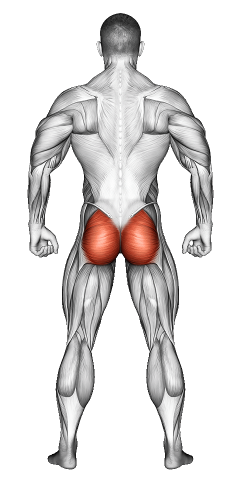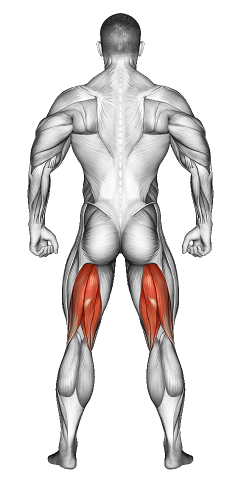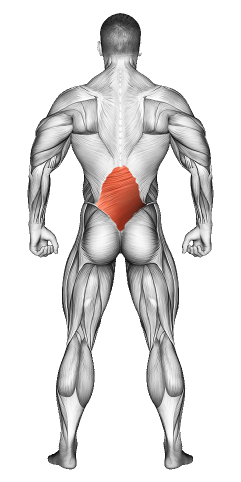Single Leg Glute Bridges: Video Tutorial & Exercise Guide

Written By: Claude Michael
Updated: Dec 26, 2024
| Workout | Single Leg Glute Bridges |
| Primary Muscle Group | Glutes |
| Secondary Muscle Group | Hamstrings, Lower Back |
| Equipment Required | Mat |
| Force Type | Bodyweight |
| Mechanics | Isolation |
| Exercise Type | Lower Body Strength |
| Difficulty | Beginner |
Single Leg Glute Bridges: Video Tutorial & Exercise Guide
- 1.Single Leg Glute Bridges: Muscle Groups
- -1.1Primary Muscle Group
- -1.2Secondary Muscle Group
- 2.Single Leg Glute Bridges: Step-by-Step Guide
- 3.Single Leg Glute Bridges: Overview
- 4.Single Leg Glute Bridges: Benefits
- 5.Single Leg Glute Bridges: Pro Tips & Advanced Techniques
- 6.Single Leg Glute Bridges: Progression Plan
- 7.Single Leg Glute Bridges: Frequently Asked Questions (FAQs)
Secondary Muscles Group
Single Leg Glute Bridges: Step-by-Step Guide
- Step 1: Lie flat on your back on the mat. Bend your knees and place your feet flat on the floor, hip-width apart. Keep your arms by your sides, palms down for stability.
- Step 2: Lift your right leg off the ground, extending it straight up toward the ceiling or at a 45-degree angle, depending on your flexibility. This will be your starting position.
- Step 3: Engage your core and press through your left heel. Lift your hips off the mat, squeezing your glutes at the top. Focus on creating a straight line from your shoulders to your knees.
- Step 4: Hold the top position for a second, keeping your glutes tight and hips lifted. Breathe out as you hold.
- Step 5: Lower your hips back down with control, stopping just before they touch the mat. Keep your right leg lifted and repeat the movement, focusing on engaging your glute and hamstring.
- Step 6: Complete your desired reps, then switch to your left leg. Follow the same steps to work the other side.
Single Leg Glute Bridges: Overview
Single Leg Glute Bridges target the glutes and hamstrings, isolating one leg at a time to build strength and balance. This exercise helps improve hip stability, which can reduce the risk of lower back and knee pain. Perfect for all fitness levels, Single Leg Glute Bridges give you a deeper glute activation and strengthen your core along with your lower body.
Single Leg Glute Bridges: Benefits
Single Leg Glute Bridges focus on strengthening your glutes and hamstrings while enhancing hip stability and core engagement. This movement also helps improve balance and coordination by working each leg independently. Adding Single Leg Glute Bridges to your workout can enhance lower body strength, build muscle tone, and support better posture.
Single Leg Glute Bridges: Pro Tips & Advanced Techniques
- Focus on Squeezing Your Glutes: Engage your glutes fully at the top of each rep to get the most benefit from the exercise.
- Keep Your Hips Level: Avoid letting one hip drop. Stay steady and balanced to maximize the glute engagement.
- Add a Weight for More Resistance: Place a dumbbell or weight plate on your hip for an extra challenge, increasing the intensity on your glutes.
- Breathe with Control: Exhale as you lift, inhale as you lower. This rhythm helps you stay steady and focused on your movement.
Single Leg Glute Bridges: Progression Plan
Beginner
Intermediate
Advanced
Single Leg Glute Bridges: Frequently Asked Questions (FAQs)
What muscles do Single Leg Glute Bridges work?
+Single Leg Glute Bridges target the glutes and hamstrings, improving lower body strength and hip stability.
Can I add Single Leg Glute Bridges to any workout?
+Yes! Single Leg Glute Bridges work well in any lower body or core routine. Add them to activate your glutes and enhance hip strength.
Will Single Leg Glute Bridges improve my balance?
+Yes. This exercise challenges each leg individually, which improves balance and coordination.
How often should I do Single Leg Glute Bridges?
+Include Single Leg Glute Bridges in your routine 2-3 times a week, especially on lower body strength days.
What mistakes should I avoid?
+Don’t let your hips drop or twist. Focus on keeping your core tight, hips level, and using controlled movements for the best results.
Share
Don’t Wish for It, Work for It – Join the FlexXP Newsletter Today!
Thank you for signing up for the FlexXP Newsletter!
This site is protected and the Google Privacy Policy and Terms of Service apply.


